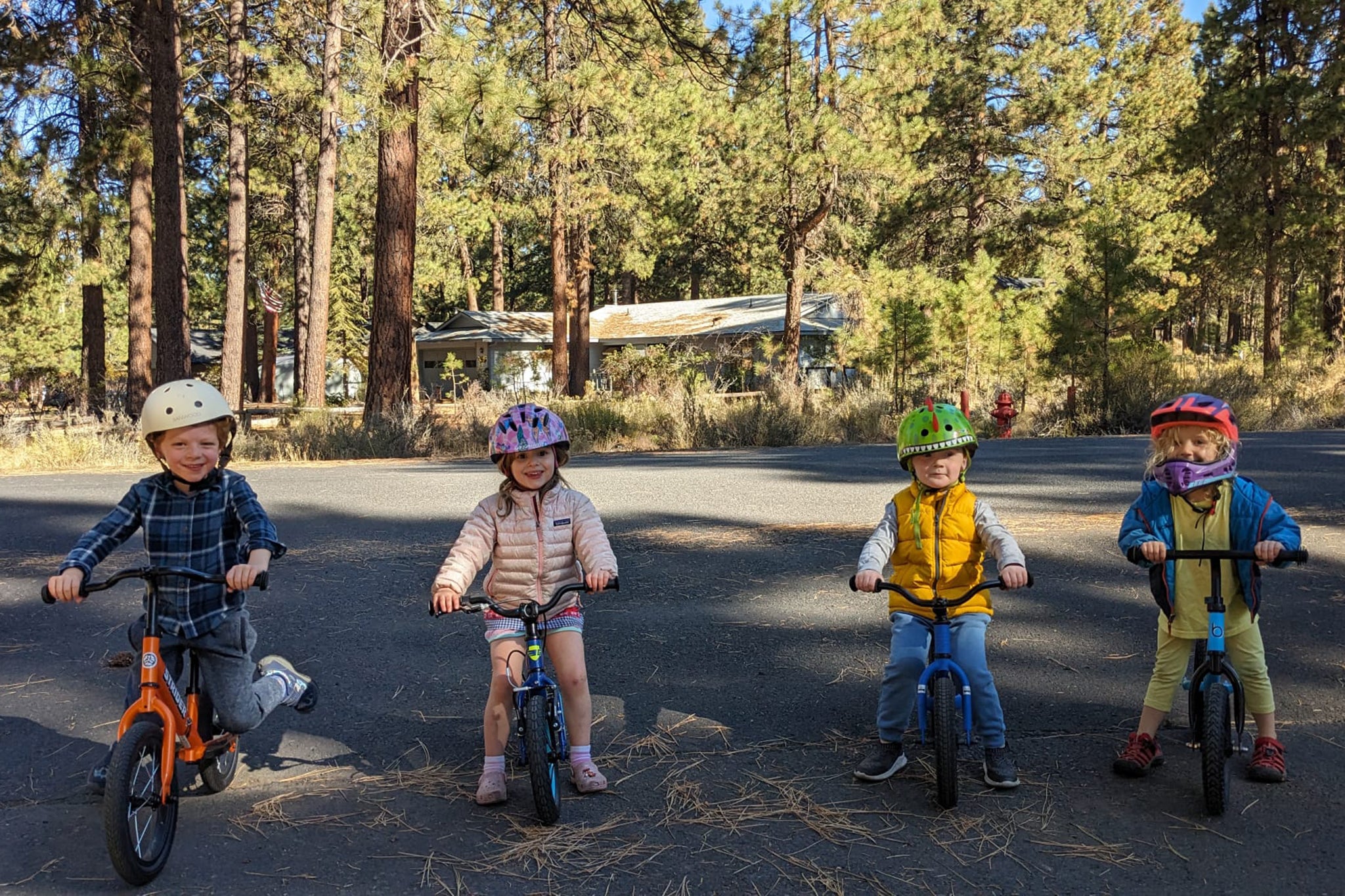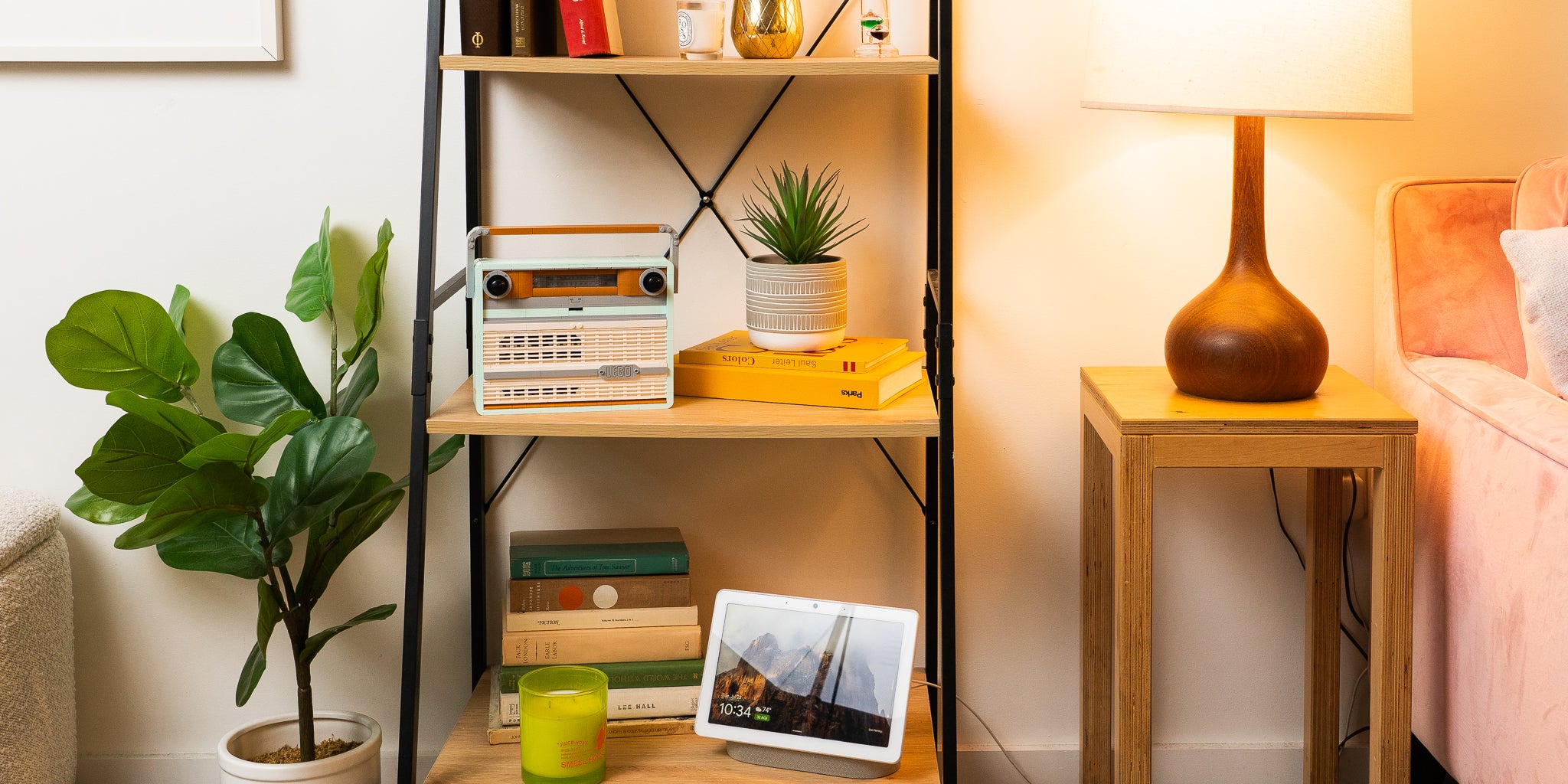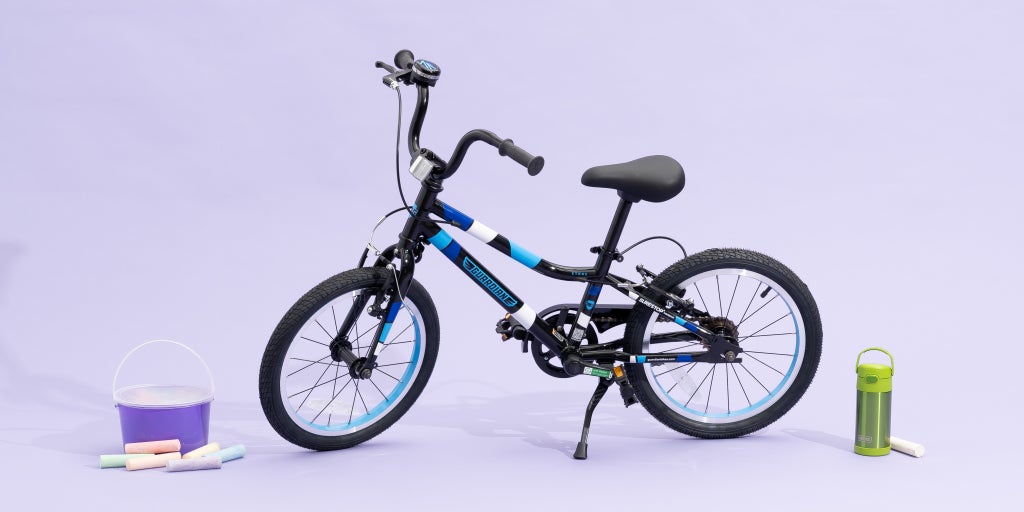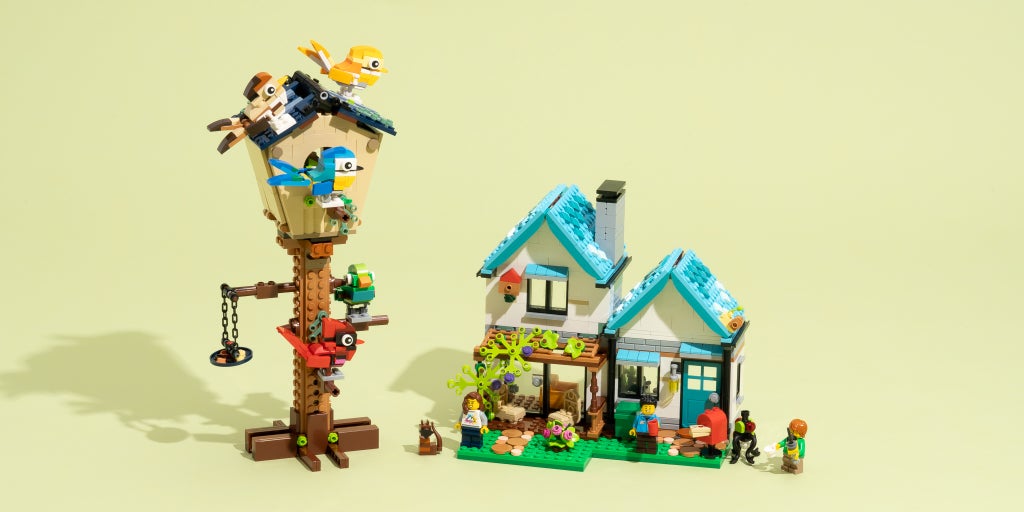A balance bike may be a youngster’s very first intro to zipping about on their own heavy steam. These bikes help toddlers discover to steer, brake, balance, and adventure– making the eventual graduation to a pedal bike simpler than it could be with training wheels.
Youngsters as young as 18 months might be able to ride a balance bike, and numerous bikes can keep kids happily sliding along until they’re preschool age or older. Youngsters can ride them outdoors or inside your home (if your home has the room) and can use them on family members jaunts through the area. Quality balance bikes likewise have great resale worth, and you can look for a lightly utilized one if you’re going shopping on a budget. We likewise have recommendations for the very best youngsters helmets.
After investing over 80 hours investigating and putting together 26 equilibrium bikes, and subjecting them to evaluate panels of very energised youngsters, we’re confident that the Guardian Equilibrium Bike is the very best choice.
The Guardian Equilibrium Bike was a surprise hit throughout our 2023 testing round, as the young children in the group fought over riding it. They liked the fancy design, easy-to-grip handlebars, reduced stand-over elevation, and sound handbrake, which slows both the front and back wheels, an attribute we didn’t discover on any other bike we attempted. That gets children one action better to riding a pedal bike on their own since they can learn to stop without dragging their feet on the ground. This Guardian bike, which has been offered for about three years, is a heavier-than-average 8.5 extra pounds, that makes for even more stability and based turns, helped by the guiding limiter, which avoids kids from transforming the guiding wheel as well much away or too promptly. The top quality, air-filled tires likewise add to a smooth trip. And this model is very easy to set up, with clear educational video clips supplied.
Best for: ages 2 to 4
Weight of bike: 8.5 pounds
Stand-over elevation: 7 inches
Handbrake: yes
If our top choice is marketed out or if you have a taller child, the REI Co-op Cycles REV 12 Children’ Equilibrium Bike is an excellent choice. The REV 12 functions air-filled tires and thoughtful kid-specific design aspects such as a low top tube and a seat height that you can adjust by 4 inches. Note, though, that the most affordable elevation (measured from the ground) is 13.75 inches, which is a taller beginning factor than the Guardian Balance Bike’s 12.5 inches; this indicates the bike is better fit to slightly taller children. It also has a somewhat higher weight limitation than the Guardian model. While the REV 12 lacks a few of the bonus of our leading choice, such as a handbrake, it’s strong, and many of our kid testers went with it over a lot more costly bikes, likely because of the larger handlebars and the rate they can accomplish. We additionally provided the REV 12 high marks for simple assembly.
Best for: ages 3 to 4
Weight of bike: 9 extra pounds
Stand-over height: 8.5 inches
Handbrake: no
Our professionals concurred: Invest much less than $100 on an equilibrium bike, and you have to make some compromises. Though the steel-framed Banana Bike GT uses two of the most vital features for beginning motorcyclists– a low-enough stand-over elevation of 8 inches and light weight of 6.4 pounds– it took us more than an hour to construct this version and make adjustments out of package. But the frame is well engineered, and the series of elevation adjustability for the handlebars and seat is adequate. In our tests, the Banana Bike GT’s air-filled tires worked penalty on paved, dirt, and carpeted surface areas but were a bit slippery on cooking area linoleum and hardwood floorings, unlike our top pick and runner-up. The Banana Bike LT is basically the very same bike, with less-durable foam tires.
Best for: ages 2 to 4
Weight of bike: 6.4 extra pounds
Stand-over elevation: 8 inches
Handbrake: no
The Woom 1 balance bike does not jeopardize on anything: It supplies straightforward assembly, strong parts, and ideal geometry. Weighing under 7 pounds, the bike includes an optimal upright riding setting, a really reduced 7-inch stand-over elevation– the same as on the Guardian Equilibrium Bike, and terrific for much shorter children– and 5 inches of seat adjustability, beginning on the reduced end at 10 inches. (Many others begin around 12 inches.) Throughout our screening, the youngest and smallest youngsters in the group gravitated to this bike because of the reduced height. Recessed hardware at the wheels makes it impossible for youngsters’ legs to snag, while a removable rubber O-ring produces a flexible steering limiter to prevent front-wheel jackknifes. Like the Guardian bike, this Woom model also instructs hand braking, with a built-for-little-hands bar.
Best for: ages 18 months to 3 years
Weight of bike: 6.6 pounds
Stand-over elevation: 7 inches
Handbrake: yes
Of all the bikes we attempted, the Strider 14x Sporting activity was the favorite of older and taller youngsters. Amongst the little sector of equilibrium bikes that can convert into pedal bikes (you need a $70 add-on package), it’s the very best alternative. Yet unlike the remainder of the equilibrium bikes we tested, which have 12-inch wheels, this bike has 14-inch wheels, so it best fits youngsters from about 3 1/2 to 7 years of ages, depending upon their height. Including a stand-over elevation of 10 inches and an exceptional seat-height range of 15 to 22 inches, the 14x Sport evaluates 12.5 extra pounds, reasonably light compared with various other pedal bikes of this dimension. Pair all of that with a handlebar stem that you can elevate almost 4 inches, and you have a particularly versatile bike that’s fun to ride and capable of growing with your child.
Best for: ages 3 to 5
Weight of bike: 12.5 pounds
Stand-over height: 10 inches
Handbrake: no
Why you ought to trust us
Jenni Gritters invested 20 hours researching equilibrium bikes, as well as putting together and testing nine of them, for the late-2023 upgrade to this overview. She additionally organized a “bike party” with 10 youngster testers, ages 2 to 6. In the summertime of 2024, she examined 4 additional bikes with her 2 youngsters and two of their buddies.
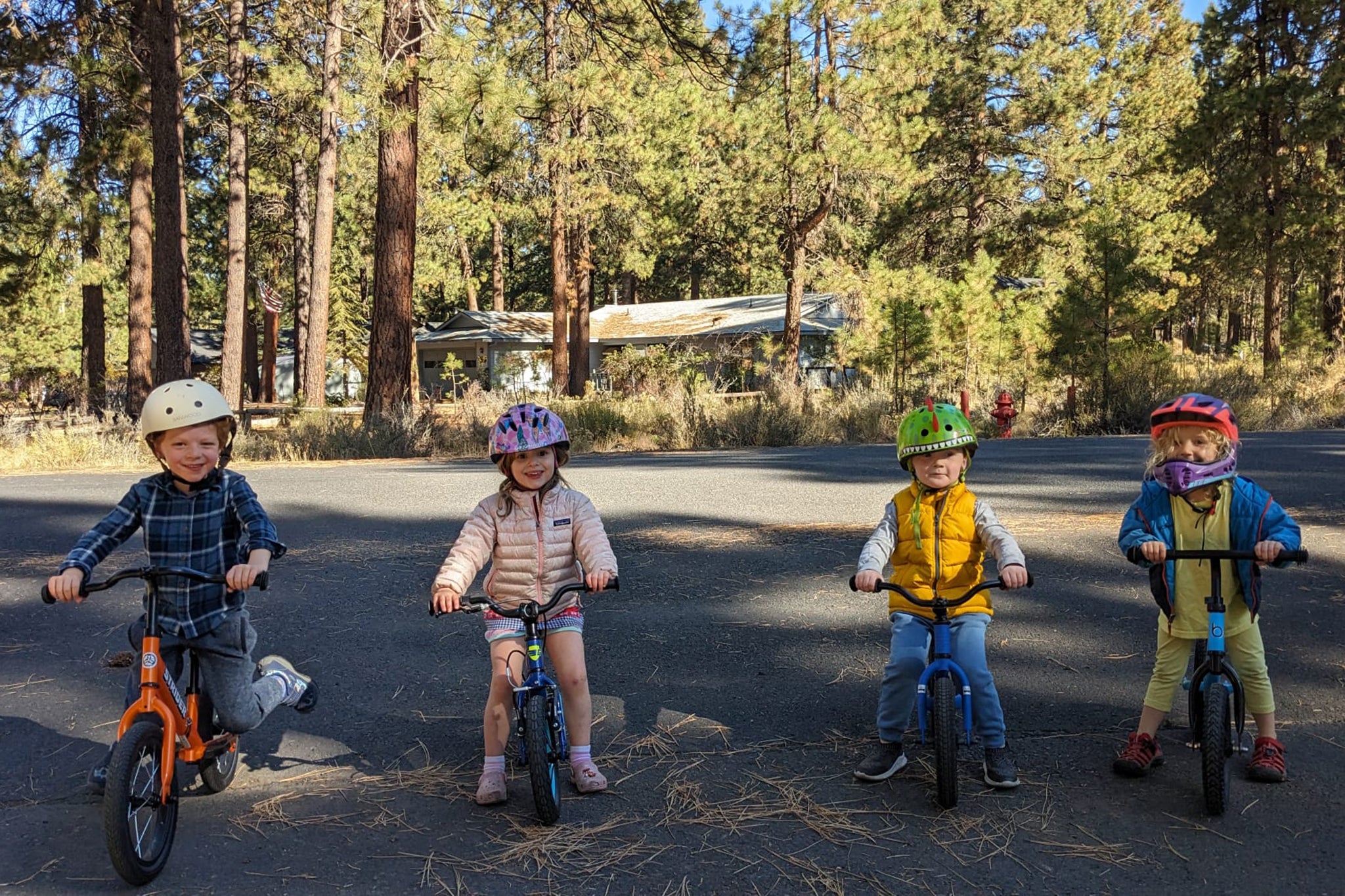
Jenni was previously an editor on Wirecutter’s outdoors team, and additionally created our overviews to the very best running infant strollers and the very best tricycles. She is a passionate outdoor lover and a mother to 2 children, that were age 1 1/2 and virtually 4 at the time of our 2023 testing.
Chris Dixon, this guide’s initial author and a lifelong mountain cyclist, talked to bike-industry professionals and spent more than 20 hours assembling, exploring, and testing 13 balance bikes in 2017.
That this is for
An appropriately fitted balance bike can allow kids as young as 18 months to learn to balance on two wheels with impressive rate. For several children, riding a balance bike is the primary step to riding a regular pedal bike, and the experience obtains them to that milestone earlier. Once they can stabilize by themselves, they discover to utilize a handbrake (if the bike has one) and to shore. Then, finally, they find out to pedal, commonly skipping training wheels entirely.
Equilibrium biking additionally provides children the opportunity to construct the coordination, equilibrium, leg musculature, and self-confidence that they’ll need for pedal biking– all points they don’t obtain if you start them on training wheels.
Not every child takes to an equilibrium bike, though. Numerous like to skip an equilibrium bike and stick to a tricycle or mobility scooter until they await a pedal bike. It’s likewise possible to remove the pedals on most common bikes and learn to balance by doing this, though pedal bikes are usually sized for a taller and older child contrasted to balance bikes.
How we chose and examined
A great equilibrium bike strikes the adhering to marks:
Appropriate geometry: A balance bike need to put a child in an upright to extremely slightly forward-leaning position. A relatively long wheelbase (the distance in between the facilities of the front and back wheels) makes the bike inherently much more steady. If the distance in between the handlebars and the seat is also limited, the youngster will be uncomfortably upright, and even leaning a little back, and their knees will hit the handlebars as they grow. If that seat-to-bar distance is undue, the kid will be stooped over and putting excessive weight on the handlebars.
Low stand-over elevation: Additionally called step-in elevation, this is the height of a bike’s primary tube (additionally called the leading tube). Preferably, this height is around 7 to 8 inches off the ground on a 12-inch equilibrium bike (the number represents the wheel dimension), which is reduced sufficient for a lot of 2-year-olds to tower above pleasantly. A reduced stand-over elevation lowers the bike’s center of gravity and allows a nervous kid to keep the bike balanced– and to easily embark on.
Reasonable weight: Multiple sellers we talked to suggested that a great equilibrium bike must not weigh greater than 30% of a kid’s weight; for example, a bike must be 9 pounds or lighter for a 30-pound youngster. The bike’s weight figures out just how easily the youngster can heft it upright, swing it about by the handlebars to obtain it right into position, and, crucial, quit it, specifically if they’re using their feet rather than the handbrake. Usually, aluminum-framed bikes rank amongst the lightest, however they have a tendency to be extra pricey. Steel is one of the most common product.
Flexible sizing: The most effective equilibrium bikes expand with a youngster. The seat post should expand by at the very least 3 inches, and the handlebars ought to enable you to raise them; if they additionally turn, that’s even better.
Simple-to-use brake system: Though most children can quit simply fine with their feet, a handbrake is a desirable safety attribute, specifically in sloping areas. And also, with a handbrake, children discover a valuable skill for future pedal cycling.
Appropriate wheel size and develop: For newbies ages 2 to 3, or a shorter 4-year-old, 12-inch-diameter wheels are typically the most effective option. Any kind of smaller, and a kid can find it difficult to equilibrium. If the wheels are larger, the bike is likely too ungainly for smaller sized youngsters. Most kids start on a 12-inch bike and after that finish to a 14-inch model once they hit 3-foot-1. Overall, the very best tires are air-filled rubber ones because they moisten bumps and hold much better on smooth surface areas such as concrete and wood floors, although they are at risk to flats. Next off on the checklist are foam tires due to the fact that they don’t call for pumping and have great grip outdoors (but can be slippery indoors).
Easy setting up and maintenance: From unboxing, a balance bike need to be ready to roll in about half an hour, and the average parent ought to be able to assemble it appropriately without an expert’s aid. Directions ought to be clear and very easy to follow, and essential tools must be consisted of.
For the very first version of this overview, a panel of children varying from ages 2 to 8 examined 13 leading balance bikes in a level neighborhood over a period of a few weeks. In 2023, Jenni and her almost-4-year-old boy, a balance bike lover, spent 2 weeks examining this overview’s existing picks versus five new competitors by riding them in their community. He tried them on sidewalk, in dirt, and on crushed rock, in rain and sunshine, and promptly established faves. Then Jenni threw a bike party with 10 children, ages 2 to 6. The children raced around both smooth and dirt paths, ripping around cones. After viewing the kids in action, parents submitted their thoughts on the most effective options.

